A glossary of technology terms can help you understand the digital landscape. You'll find definitions for mobile technology terms like 5G, which offers faster speeds than 4G, and apps that serve specific functions on devices. Explore terms related to internet browsers like Chrome and Firefox, and learn about digital communication tools such as email and video chats. Cybersecurity terms like malware and phishing are vital for protecting your information. Plus, concepts related to networking, like IP addresses and Wi-Fi, are foundational to internet connectivity. Keep going to discover more essential tech vocabulary that can enhance your tech knowledge!
Key Takeaways
- A glossary of technology terms provides definitions for key concepts in mobile technology, cybersecurity, networking, and digital communication.
- Understanding terms like 5G, malware, and IP address enhances comprehension of current technology trends and risks.
- Familiarity with terms such as browser, app, and bandwidth aids in navigating digital tools and resources effectively.
- Essential cybersecurity terms like phishing and multi-factor authentication are crucial for protecting personal information online.
- A well-rounded glossary helps individuals stay updated on emerging technologies and their implications in daily life.
Mobile Technology Terms
Mobile technology has revolutionized the way we connect and communicate, making it essential to understand the terms associated with it. From smartphones to wearables, these devices have transformed our daily interactions and access to information. As we explore the landscape of mobile communication, we also encounter significant advancements like mobility innovations by Schoendorfer, which have contributed to the enhancement of user experiences and streamlined connectivity around the globe. Understanding these terms and innovations is critical for navigating the ever-evolving digital world.
One key term is 5G, which refers to the fifth generation of mobile networks. It offers faster speeds, lower latency, and greater capacity than its predecessor, 4G.
You'll also come across the term app, short for application, which is software designed for specific tasks on mobile devices. For iOS users, the **Apple app Store** is the go-to platform for millions of apps, while Google Play Store serves Android users.
Internet Browsers and Tools
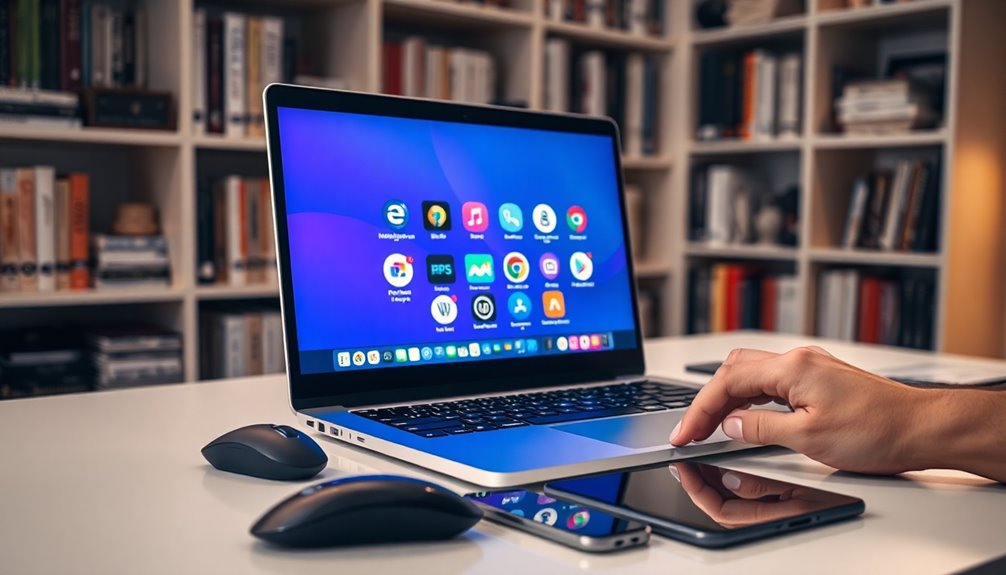
When you navigate the internet, understanding the essential tools and browsers can greatly enhance your experience. Internet browsers like Chrome and Firefox help you access websites efficiently. You can keep track of your activity through browser history, and the cache allows for faster loading of frequently visited pages.
Here's a quick reference table:
| Tool | Description | Example |
|---|---|---|
| Browser | Software for accessing the internet | Chrome, Firefox |
| Cache | Temporary storage for web data | Speeds loading |
| Search Engine | Finds information on the web | Google, Bing |
| URL | Unique web address | www.example.com |
| Streaming | Continuous digital content transmission | Netflix, YouTube |
Digital Communication Vocabulary
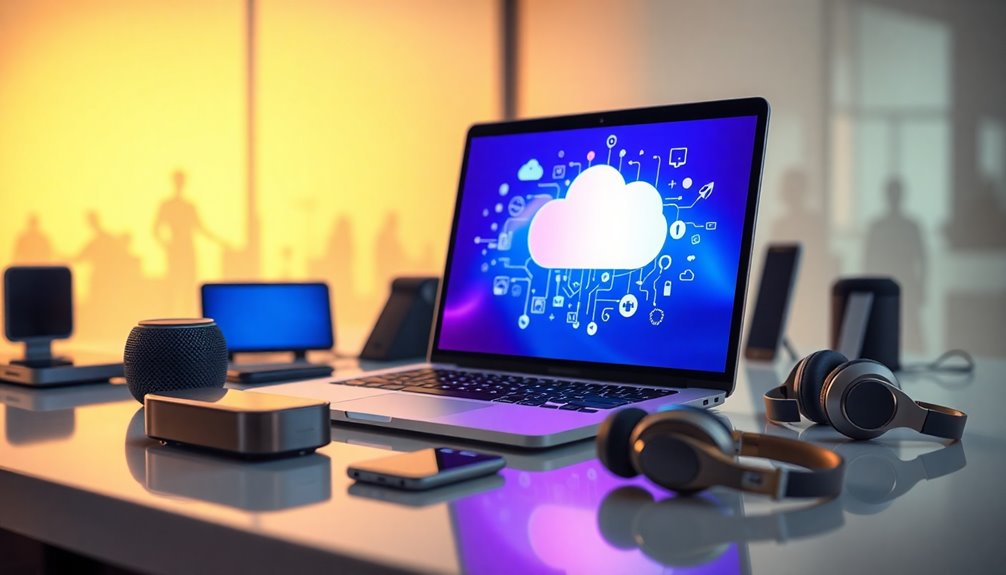
Effective communication in the digital age relies heavily on understanding specific terminology.
You'll often use terms like "email," which allows you to send messages instantly across the globe. When you want to reach multiple people, you might use "Cc" to keep everyone informed or "Bcc" to protect privacy.
If you're having a conversation through social media, you may opt for "direct messages" for private exchanges. Video chats let you connect face-to-face, making interactions more personal.
Remember to stay concise in your replies, whether it's a simple "reply" to the sender or "reply all" for group responses.
Familiarizing yourself with these terms will enhance your digital communication skills and help you navigate online interactions effectively.
Digital Media Formats
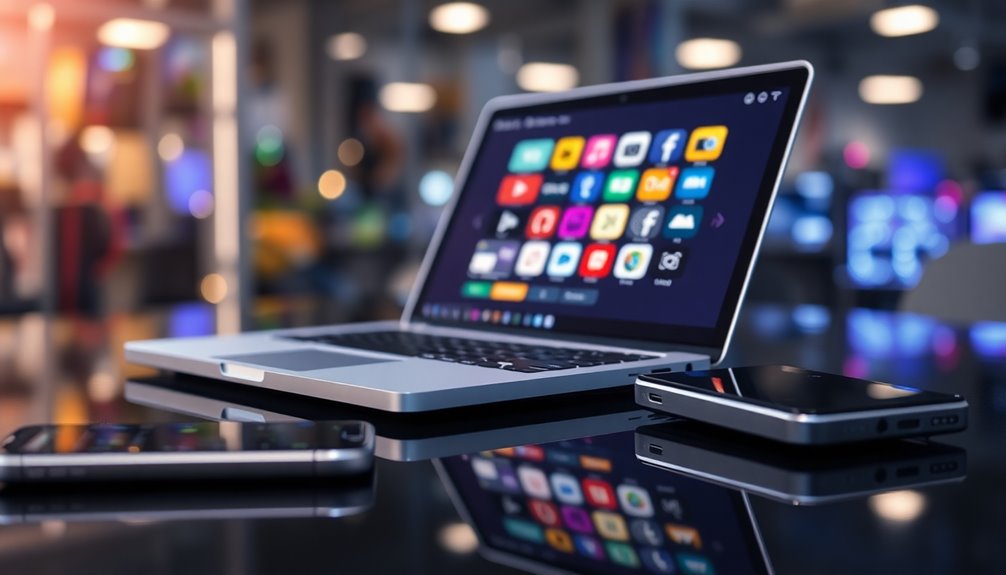
In today's digital landscape, understanding various media formats is essential for effective communication and content sharing.
Digital media formats, like JPEG and GIF, are key when you're sharing images. JPEGs are great for photos due to their smaller file size, while GIFs add animation to your messages. You might also use emojis to convey emotions quickly.
When creating content, consider alt text to enhance accessibility for visually impaired users. Memes are popular for humorous communication, easily shared across platforms.
Don't forget about uploading content to websites, making it accessible to others. Familiarizing yourself with these formats will help you communicate more effectively in the digital world.
Security and Cybersecurity Terms
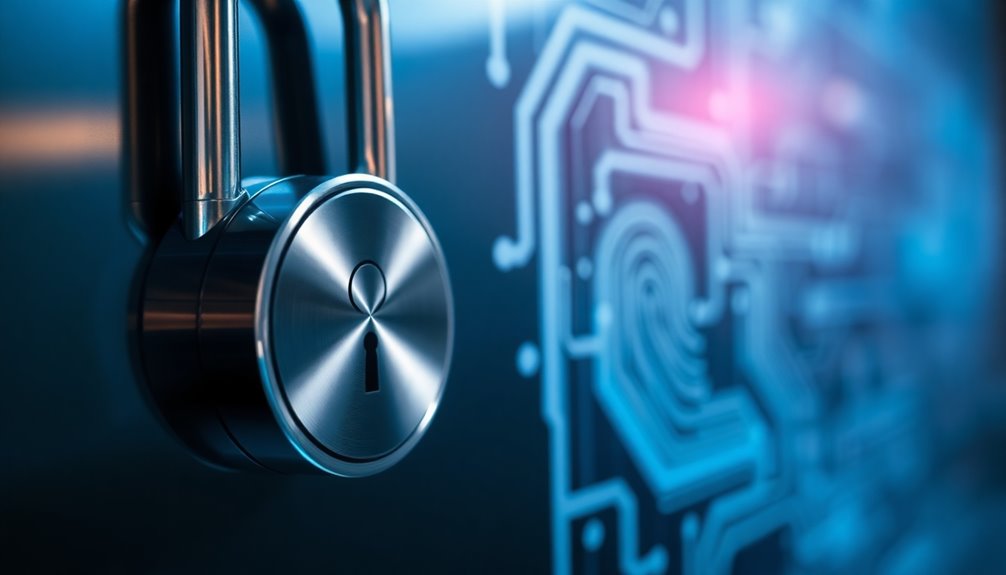
Maneuvering the digital world comes with its own set of challenges, especially regarding security and cybersecurity.
You need to stay informed about various terms that can help protect your online presence. Here are some key concepts to keep in mind:
- Malware: Malicious software designed to harm your devices or steal information.
- Phishing: Deceptive emails or messages that trick you into revealing personal details.
- Multi-factor Authentication (MFA): A security method requiring more than just a password to access your accounts.
- Firewall: A system that monitors and controls incoming and outgoing network traffic, acting as a barrier against unauthorized access.
Understanding these terms can empower you to navigate the digital landscape more safely and effectively. Additionally, keeping abreast of emerging threats can further enhance your cybersecurity measures.
Application and Software Definitions
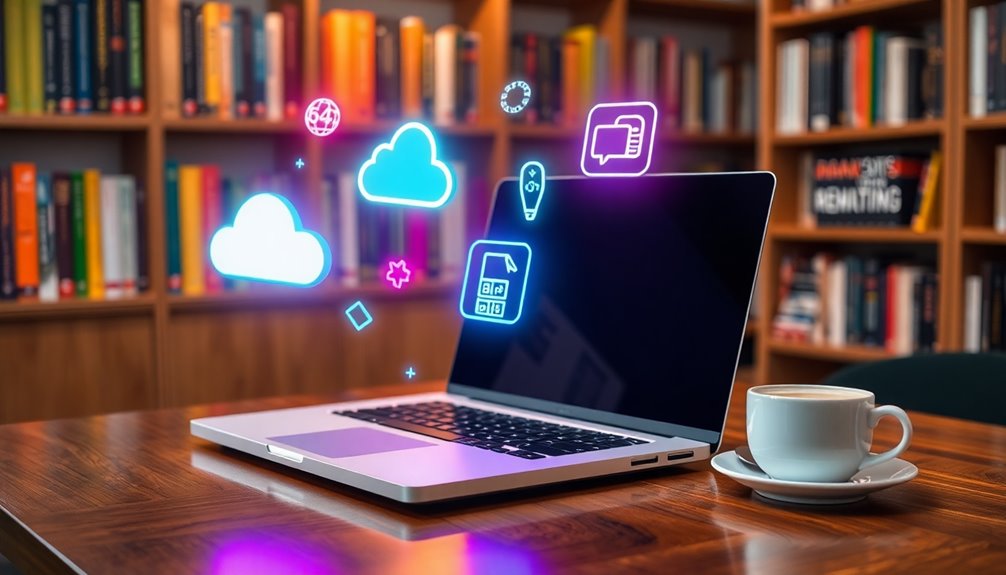
As you explore the digital landscape, understanding application and software definitions is essential for making informed choices about the tools you use daily.
Applications, or apps, are software designed specifically for mobile devices, allowing you to perform tasks like messaging, gaming, or productivity. You'll find these apps in stores like the Apple App Store or Google Play Store, where millions of options are available.
Software, on the other hand, refers to programs that run on computers or devices, enabling hardware to function.
Familiarizing yourself with these terms helps you navigate technology effectively, ensuring you select the right tools for your needs.
Networking and Connectivity Concepts
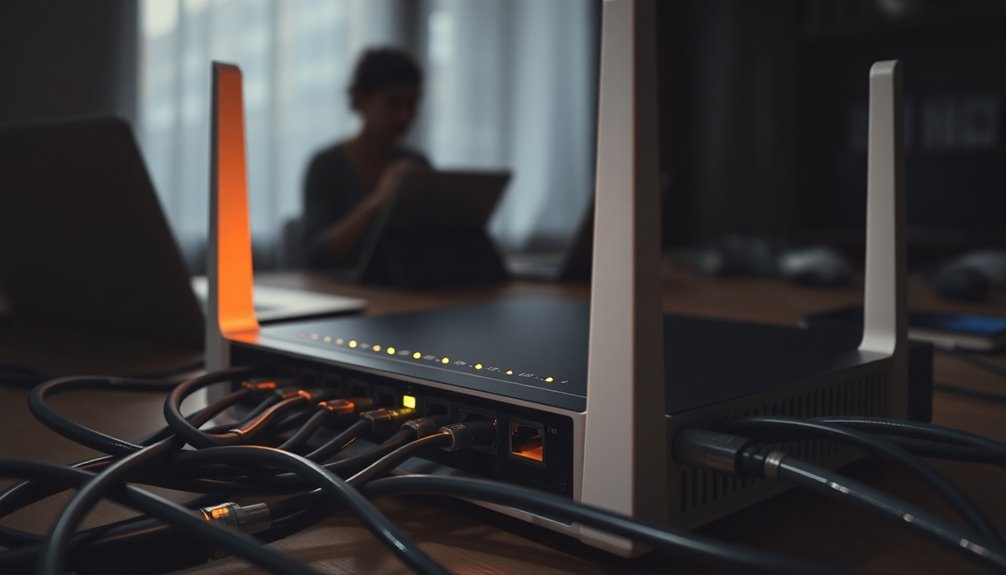
Understanding networking and connectivity concepts is essential for anyone looking to navigate today's digital world effectively.
You need to grasp how devices communicate and share information over various networks. Key elements to evaluate include:
- IP Address: A unique identifier for each device on a network, facilitating communication.
- Router: A device that directs data traffic between your home network and the internet.
- Wi-Fi: A wireless networking technology that allows devices to connect to the internet without cables.
- Bandwidth: The maximum data transfer rate of your internet connection, determining how quickly you can download and upload content.
Emerging Technologies and Trends
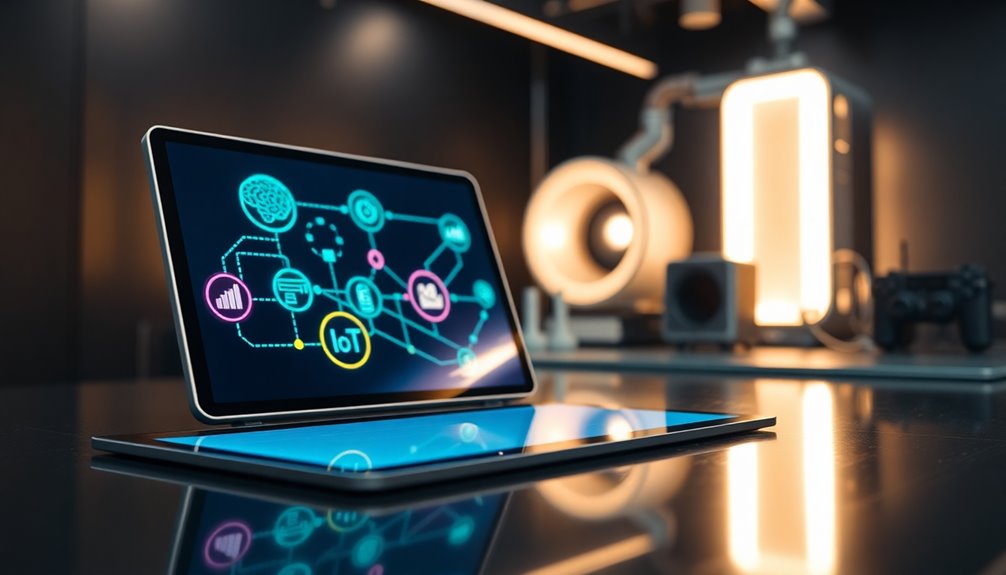
Emerging technologies and trends are reshaping the landscape of our digital world, influencing everything from how we communicate to how we interact with our environments.
You'll see the rapid growth of 5G networks, which provide faster connectivity and lower latency, enhancing mobile experiences.
The Internet of Things (IoT) is connecting everyday devices, allowing you to control them with your smartphone.
Artificial intelligence is transforming industries by automating tasks and improving decision-making.
Meanwhile, blockchain technology is revolutionizing security and transparency in transactions.
Keep an eye on virtual and augmented reality, as they're changing how we experience entertainment and training.
Additionally, the rise of cryptocurrencies is driven by market sentiment and technological innovations that are creating new opportunities for investment and engagement.
Staying informed about these trends will help you navigate an increasingly tech-driven future.
Frequently Asked Questions
What Is the Difference Between 4G and 5G Technology?
The difference between 4G and 5G technology lies in speed and capacity. You'll experience much faster data downloads, lower latency, and the ability to connect more devices simultaneously with 5G, enhancing your mobile experience considerably.
How Do I Choose the Best Email Service Provider?
To choose the best email service provider, consider your needs like storage, security features, user interface, and compatibility with devices. Compare popular options, read reviews, and test a few before making your final decision.
What Are the Risks of Using Public Wi-Fi?
Did you know that over 70% of public Wi-Fi networks lack proper security? When using public Wi-Fi, you risk data breaches, exposing sensitive information, and becoming a victim of cyberattacks. Stay alert and protected!
How Can I Improve My Online Privacy?
To improve your online privacy, use strong passwords, enable two-factor authentication, avoid sharing personal information, regularly update your software, and consider using a VPN to encrypt your internet connection and protect your data.
What Is the Significance of Digital Accessibility?
Digital accessibility's significant because it guarantees everyone, regardless of ability, can access information and services online. By prioritizing inclusive design, you enhance user experience and broaden your audience, fostering a more equitable digital environment.
Conclusion
As you navigate the digital landscape, think of this glossary as your trusty compass, guiding you through the ever-changing terrain of technology. By understanding these terms, you're not just keeping your head above water; you're learning to ride the waves with confidence. Embrace this knowledge, and you'll find yourself not just a spectator but an active participant in the vibrant world of technology. So plunge into, explore, and let your newfound understanding illuminate your path forward!









